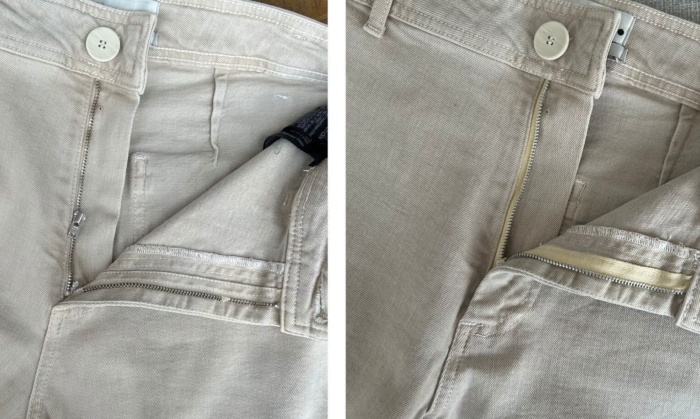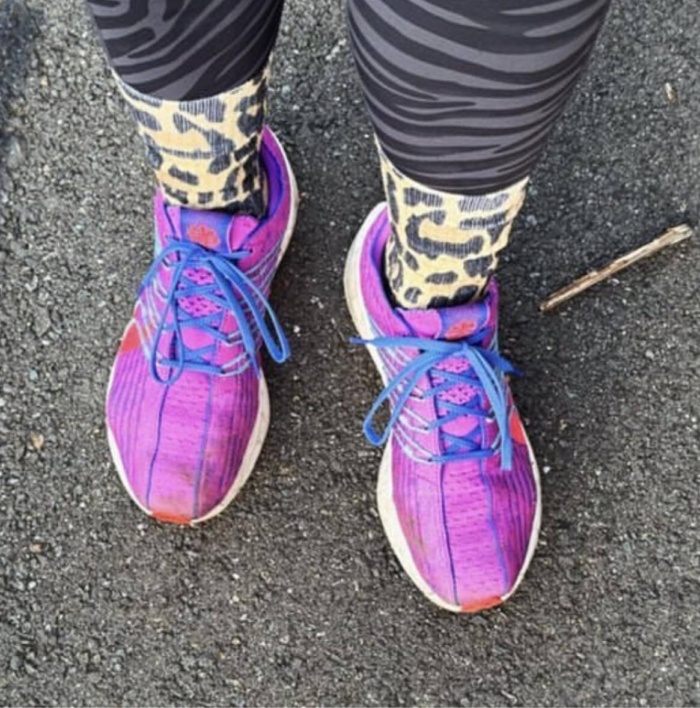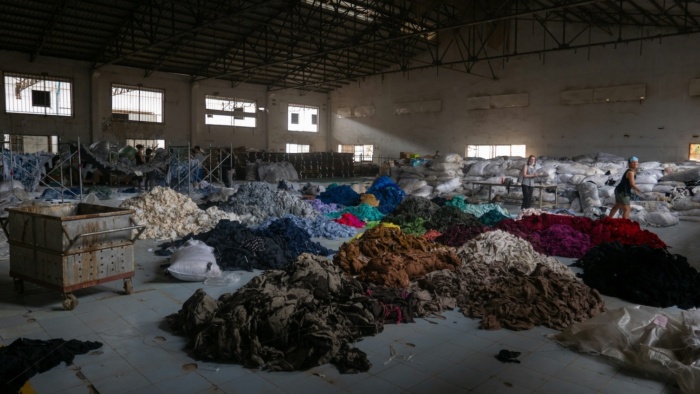
3 years ago, the zip on my jeans broke. They weren’t a particularly expensive pair of jeans, so some may question why I didn’t replace them. But, I had only worn them 3 or 4 times, so replacing them felt like a massive waste of money, and of course a massive waste of resources (did you know that almost 4,000 litres of water, and 30+kg of carbon goes into making 1 pair of jeans?).
So instead, I looked into getting them repaired at the retailer’s in-house repair service. But the cost of getting them repaired was almost half the price I paid for them in the first place, and it didn’t feel right to give the retailer who had made a low quality pair of jeans more money. Yet, loss aversion still kept me from getting rid of them.
My next step was to try fixing them myself (...with the help of my mum). Unfortunately we discovered that neither of us are good enough seamstresses to be able to replace a zip, however this didn’t stop us from spending a decent amount of time trying out some alternatives. Sadly, none of them worked, so I was back to square one.
Now, I was experiencing loss aversion and a dose of sunk cost fallacy. I had invested too much time and energy in these jeans - I wasn’t ready to give up for good! But, I was fed up and ready to give up for the moment. So I put the jeans to the back of my wardrobe - out of sight, out of mind.
18 months later, I moved house. The jeans came with me. They went to the back of my new wardrobe. But, they didn’t stay there for too long. At the end of my road is a dry cleaners, which I walk past almost every day. In big writing it advertises its clothing repair services. It couldn’t get much easier than that - I had no excuse! So I took my jeans in for repair. Although I still had to pay money to get the jeans fixed, I felt a lot better about supporting a business local to me. And besides, 2 years had passed since I first got the jeans, so it actually felt like a bargain new pair - girl maths!

So, you might be thinking what the takeaway of this blog is. And to that I say there are three:
- Next time you’re deciding whether to buy something ask yourself: would I be willing to spend £X on getting this fixed? If the answer is no, maybe you don’t want or need the item as much as you think.
- Check your wardrobe - did you know the average Brit has 31 items of unused clothing in their wardrobes gathering dust? You too could rediscover an outfit and make it feel brand new again - either for yourself, or by donating or reselling (good quality!) items to someone else. Or, if you have any broken clothing items, why not take them to your local dry cleaner or repair café?
- Understanding how and why we make decisions can help us to unlock the best solutions to behaviour change challenges - for example, my experience suggests that making clothing repair services available in convenient, neighbourhood locations, with salient prompts incorporating loss aversion communication tactics could perhaps boost the uptake of clothing repairs - both by making the desired behaviour as easy as possible, and by tapping into motivations to fix.
Do you have a challenge that could benefit from some behavioural insight? If so, get in touch - I’m sure we’ll be able to help!
Share
RELATED ARTICLES
Opinion

Now is the summer of our discount tents
In the midst of festival season, David observes the impact of low-cost tents
21/08/24
Read moreOpinion

Nudging a running injury away
Polly tries out some behaviour change tactics to help her recover from a running injury
25/07/24
Read moreSustainability

The rise of buy-to-return is killing the planet
Tasha investigates what happens to clothing returns and the impact of buy-to-return behaviour
08/11/23
Read more